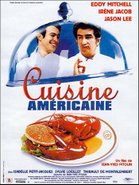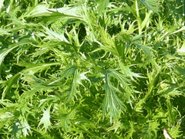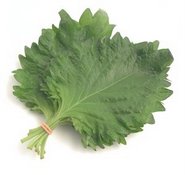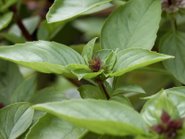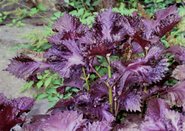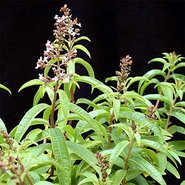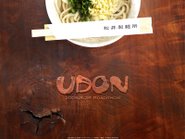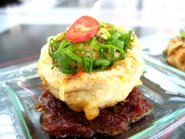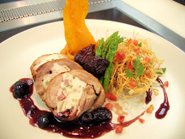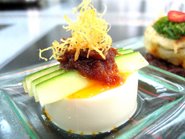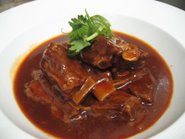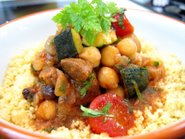33 Hyderabad Road
Singapore 119578
tel:+65 6476 9000
tel:+65 6476 9000
Touted as one of the most high end Thai restaurant, its location wasn’t in some swanky posh address. Rather it has to distinguish itself and also to justify the higher end prices or the more affluent crowds won’t bite. The place I am talking about is almost a year old modern Thai restaurant Kha, located at the Hort Park off Alexandria Road. Notice the word “modern” Thai as I define it to be which is what it is to distinguished itself from being just another Thai restaurant. Most purists would cringe to know that helming the kitchen is not a native Thai but a hot young blooded Aussie chef who has spent a considerable amount of time and career in the land of smiles. Maybe this is why the owners creatively conceptualize the modern Thai theme about the restaurant.
It is quite a challenge in trying to understand the cooking philosophy of the chef in this kind of concept restaurant especially when the cuisine and heritage of the chef do not match. But good honest cooking is not really defined by your culture or race. It’s about the chef’s passion for it.
Since its all about “modern Thai”, then N and I decided to pick on dishes that define it as there are also other classical Thai favourites like Tom Yum Goong, Massuman Curry and Mango with Sticky Rice for the traditional diehards. If we were to pick on these, then it would defeat the purpose of doing modern Thai.
Before I start on the food, let me comment on the two mocktails we ordered. I am not a fan of beverages in restaurants because my general sentiment is that it is a rip off in most places. I am not saying that the beverages are cheap here but rather they are not. However, I do admire the culinary art part of preparing the special mocktails and their combination of flavours. N took on a nice smoothie of blended lychees, pomelo and citrus which gave a refreshing stir of life on palate. My Basilistic mocktail came with a crush of fresh Thai basil, mango and fresh raspberries. It’s a wonderful combination of smell, colour and aromas.


It is quite a challenge in trying to understand the cooking philosophy of the chef in this kind of concept restaurant especially when the cuisine and heritage of the chef do not match. But good honest cooking is not really defined by your culture or race. It’s about the chef’s passion for it.
Since its all about “modern Thai”, then N and I decided to pick on dishes that define it as there are also other classical Thai favourites like Tom Yum Goong, Massuman Curry and Mango with Sticky Rice for the traditional diehards. If we were to pick on these, then it would defeat the purpose of doing modern Thai.
Before I start on the food, let me comment on the two mocktails we ordered. I am not a fan of beverages in restaurants because my general sentiment is that it is a rip off in most places. I am not saying that the beverages are cheap here but rather they are not. However, I do admire the culinary art part of preparing the special mocktails and their combination of flavours. N took on a nice smoothie of blended lychees, pomelo and citrus which gave a refreshing stir of life on palate. My Basilistic mocktail came with a crush of fresh Thai basil, mango and fresh raspberries. It’s a wonderful combination of smell, colour and aromas.
Dinner started with two appetizers, one which was a pair of crab and prawn cakes on a bed of green mango salad (Thod Man Poo). The pair of crispy breaded cakes was made with a combination of grounded shrimp and crabmeat was dressed with yoghurt and a dollop of sweet chilli sauce similar to the type served with roast chicken. Crispy yet still moist in the center, the cakes were pretty tasty with just the sweet chili sauce making the yogurt seemed a bit redundant. Then as we got on to the other appetizer which came highly recommended on the Chef’s special menu, we found ourselves with the yoghurt again. Though the cut of Wagyu beef was perfectly grilled, the red curry spices did not really come through on impact. By now I kind of figure the reason for the presence of the yoghurt on the two dishes. The standard salad dressing for Thai salads is usually made with a combination of palm sugar, fish sauce, lime juice plus the spice elements. Here at Kha, it comes with rather subtle nature than that of a strong impact given the extreme pungency of fish sauce and sourness of the lime juice. Perhaps is this done to allow the natural taste of the fresh ingredients to prevail than rather allowing it to be overpowered by the dressing? The yoghurt acts as a bridge to rein in the meat and salad with the subtle dressing.
 In between the courses, came the fun element, which is a complimentary puffed rice crackers with a creamy coconut flavoured dip, other wise commonly known as Khao Tang Na Tang. With the flavourful mocktails, they
In between the courses, came the fun element, which is a complimentary puffed rice crackers with a creamy coconut flavoured dip, other wise commonly known as Khao Tang Na Tang. With the flavourful mocktails, they make wonderful small bites on the side.
make wonderful small bites on the side.
Besides the usual offerings of hot and sour soups in the usual Thai restaurants, we were delighted to discover that Kha also offered a perennial Thai-Chinese favourite, the ubiquitous Fish Maw Soup with Quail Eggs and Seafood. The slightly thickened broth was quite flavourful and complimented the soft braised fish maw very well.


Besides the usual offerings of hot and sour soups in the usual Thai restaurants, we were delighted to discover that Kha also offered a perennial Thai-Chinese favourite, the ubiquitous Fish Maw Soup with Quail Eggs and Seafood. The slightly thickened broth was quite flavourful and complimented the soft braised fish maw very well.
We took two specials for the mains as we wanted to move away from traditional recipes to new flavours and dimensions. I had a spicy Yellow Curry Braised Pork Ribs with Roasted Egg Plant and Straw Mushrooms while N chose a Grilled Filet of Salmon with a Fine Herb Salad and a savoury spicy sauce which I suspected was concocted from fermented soy beans. The salmon was a nice fresh slab that had been grilled slightly underdone like the way I preferred. It was melt in the mouth delicious although I would have preferred a slightly more pungent sauce to go with the fatty fish. The ribs were well braised and the curry was very fragrant but a tad too spicy for me.
 As we were sharing a plate of Phad Thai for tradition sake, I did not ordered rice to go with the curry which I kind of regret.
As we were sharing a plate of Phad Thai for tradition sake, I did not ordered rice to go with the curry which I kind of regret.
The phad thai was a luxurous version of what we normally have. King size prawns, a lovely banana blossom salad on the side. I must say that the top notch ingredients used in the dishes we ordered so far made us understood what the higher prices mean in terms of a return of value.
 Dessert was a teaser, we wanted to move away from mangoes and sticky rice but something made with black glutinous rice caught my eye on the menu we decided to go with that. It was a fuse of Aussie Thai ideas with the sticky date pudding given a dose of black glutinous rice in a molasses flavoured pudding. The richness was cut by a sweet sour tamarind sauce and accompanied by one of the tastiest home made mango ice creams that I haven’t tasted for a while.
Dessert was a teaser, we wanted to move away from mangoes and sticky rice but something made with black glutinous rice caught my eye on the menu we decided to go with that. It was a fuse of Aussie Thai ideas with the sticky date pudding given a dose of black glutinous rice in a molasses flavoured pudding. The richness was cut by a sweet sour tamarind sauce and accompanied by one of the tastiest home made mango ice creams that I haven’t tasted for a while.
For the price, the ambience (actually it was trashed by people (read: Singaporeans) who just can’t respect the sophistication of a restaurant by turning up in t-shirts and Bermudas shorts) and unique garden location, its worth a revisit for to savour the creativity of Chef David Hamilton creations as long as u avoid going in with expectations of the classics.
The phad thai was a luxurous version of what we normally have. King size prawns, a lovely banana blossom salad on the side. I must say that the top notch ingredients used in the dishes we ordered so far made us understood what the higher prices mean in terms of a return of value.
For the price, the ambience (actually it was trashed by people (read: Singaporeans) who just can’t respect the sophistication of a restaurant by turning up in t-shirts and Bermudas shorts) and unique garden location, its worth a revisit for to savour the creativity of Chef David Hamilton creations as long as u avoid going in with expectations of the classics.



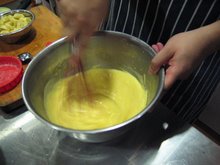

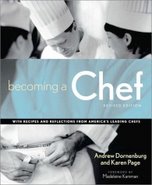
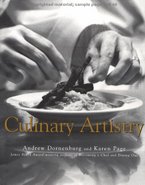


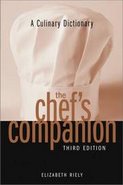

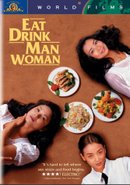
.jpg)
